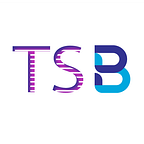Blockchain for Philanthropy (Part 77)
Welcome to the 77th part of the 100-part series on Blockchain.
Charity and non-profit sectors are always surrounded by dark clouds of corruption and inefficiency. The environment of mistrust and opaqueness has impacted people’s faith in these charities and nonprofit organizations.
And in turn, this has impacted their will and wish to donate to these charities.
This decline in the inclination to donate has led to a situation where many genuine charities are underfunded and are struggling to match the demand of their services.
In the current scenario, donors don’t have a reliable way to know how their funds are being used and whether they are being used for the intended purpose or not. They only have limited access to this information through annual reports and websites of these Charity organizations and NGOs, where these organizations report their updates on where and how these funds were used.
Additionally, there are many third-party organizations that report on these charities and also rank them based on their performance. But again, the reporting is done on the basis of the information which is made public by these charities.
Blockchain- The Solution
In such an opaque and fragmented system, there is no single place for a donor to know if his donations are really creating the impact that was promised to him when the funds were being raised. Blockchain is the solution that has the potential to transform this sector and make it more transparent, efficient, and accountable.
With this distributed ledger technology, donors can easily track how their funds are being used by these charities. For this purpose, a unique public address will be assigned to each charity registered on the Blockchain. This will help people to track the donations and to check where these funds are being redirected to. Thus, bringing accountability and transparency in the system.
Further, no record can be erased because of its innate characteristic of immutability.
Smart contracts, along with Blockchain, will further disrupt this sector. For example, say certain terms were promised to you when the funds were being raised. But how do you know if the conditions were fulfilled?
With smart contracts, an extra layer of security and effectiveness will be added to these donations. With the implementation of smart contracts, funds would be transferred only to the expected recipients, and that too, when the specific predetermined conditions are met.
In case the predetermined conditions are not met, then the donations made can be reversed back to the donor. The best use case of this can be the 2010 Haiti Earthquake, where Red Cross raised 500 million USD to build more than one hundred thousand homes. But only six homes could be constructed out of these proposed one hundred thousand plus homes. Imagine how useful this technology could have been in such a scenario. The unused money left could have been sent back to the respective donors or used to fund another cause with the permission of these respective donors.
With Blockchain, it would also be much easier to track the administrative cost of these charities. As in many cases, these costs are reported after inflating multiple times by some corrupt officials for their personal gains. Hence Blockchain undoubtedly has the potential to put a check on the corruption that prevails in this sector.
If you liked this article and want to know more about Blockchain, NFTs, Metaverse, and their applications, click the below link.
Happy learning!
